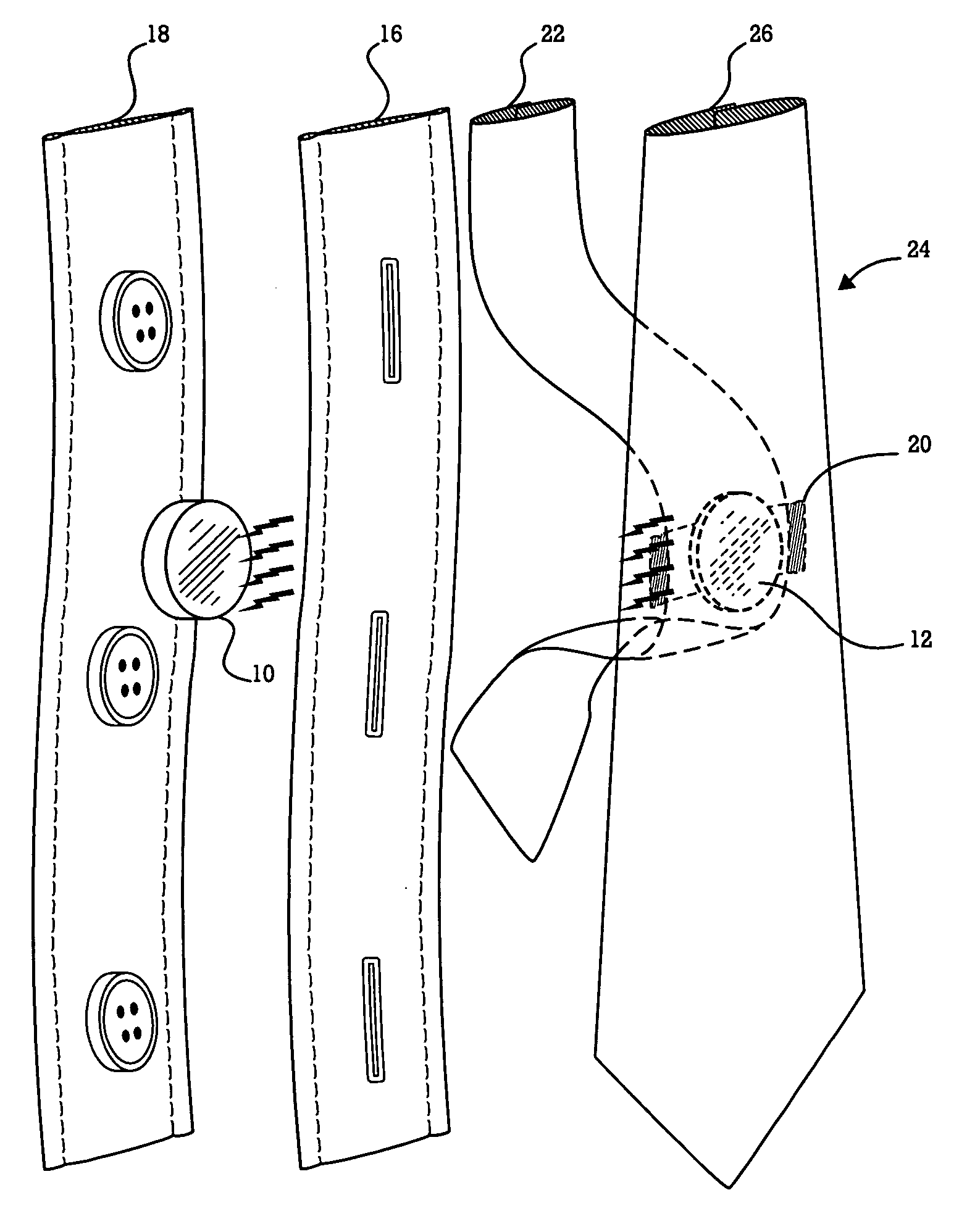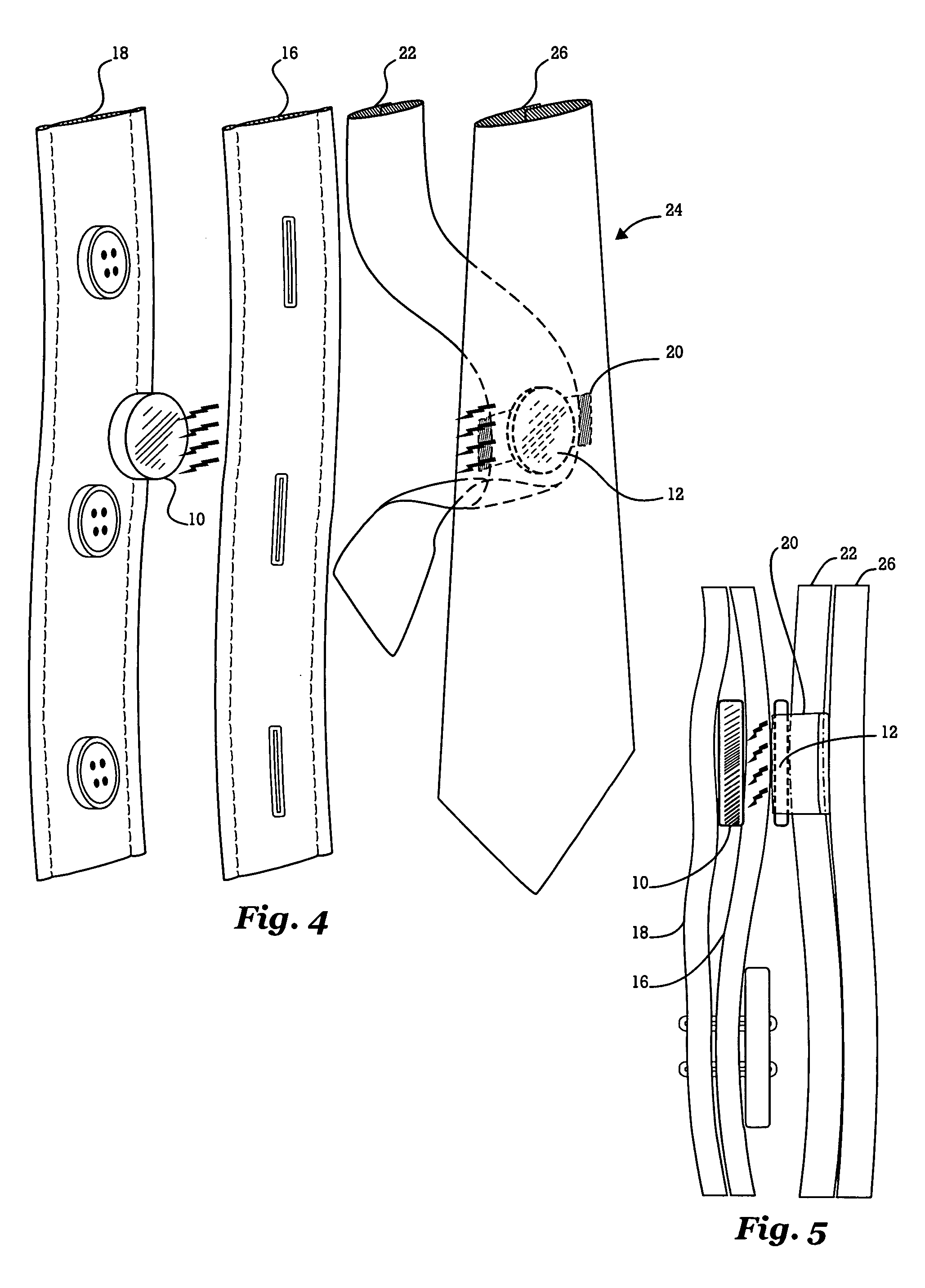Apparatus and method for holding garments
a technology for garments and accessories, applied in the direction of retainers, neckties, press-button fasteners, etc., can solve the problems of damage to clothing, inability to securely fasten multiple layers of clothing together, and inability to permit easy separation of the ornamental end of the necktie from the shir
- Summary
- Abstract
- Description
- Claims
- Application Information
AI Technical Summary
Benefits of technology
Problems solved by technology
Method used
Image
Examples
Embodiment Construction
[0034] While this invention is susceptible of embodiment in many different forms, there are shown in the drawings and described in detail, certain preferred embodiments with the understanding that the present disclosure should be considered as an exemplification of the principles of the invention and is not intended to limit the invention to the embodiments so illustrated.
[0035]FIGS. 1-3 describe a generic magnet and faceplate combination as used in the present invention. Magnet 10 is preferably made from a rare Earth material 11, such as Neodymium Iron Boron (NdFeB), sintered to form a permanent magnet of about Grade N35 (i.e. preferably a magnet having BHmax equal to about 33 to 35 Million Gauss Oersted energy units (MGOe), where BHmax is the maximum product of the induction (B) measured in Gauss units and the magnetic field strength (H) measured in Oersted units). Magnet 10 is encased by coating 14 to prevent corrosion of the underlying rare Earth substrate. Besides protecting r...
PUM
 Login to View More
Login to View More Abstract
Description
Claims
Application Information
 Login to View More
Login to View More - R&D
- Intellectual Property
- Life Sciences
- Materials
- Tech Scout
- Unparalleled Data Quality
- Higher Quality Content
- 60% Fewer Hallucinations
Browse by: Latest US Patents, China's latest patents, Technical Efficacy Thesaurus, Application Domain, Technology Topic, Popular Technical Reports.
© 2025 PatSnap. All rights reserved.Legal|Privacy policy|Modern Slavery Act Transparency Statement|Sitemap|About US| Contact US: help@patsnap.com



